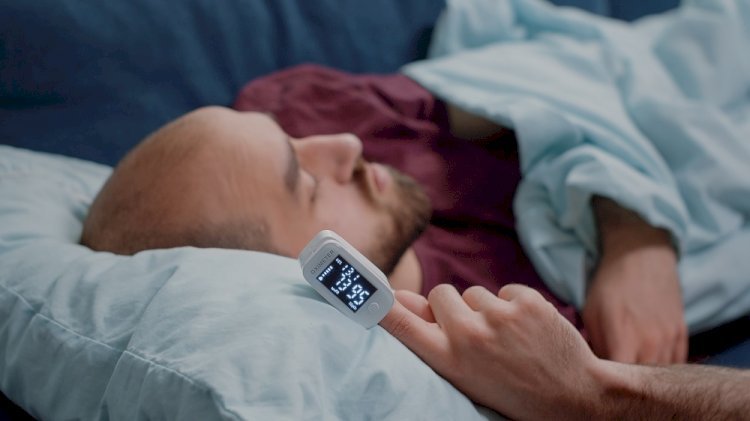What to Expect During an MSLT Test: A Patient’s Guide

Are you scheduled for an MSLT test and wondering what to expect? The Multiple Sleep Latency Test (MSLT) may sound technical or intimidating, but it's actually a safe and straightforward procedure designed to assess daytime sleepiness and help diagnose sleep disorders like narcolepsy and idiopathic hypersomnia.
This patient-friendly guide will walk you through everything you need to know — from how the test works to what you should bring — so you can feel confident and prepared on the day of your appointment.
What Is an MSLT Test?
The MSLT test is a diagnostic sleep study that evaluates how quickly you fall asleep in a quiet, controlled setting during the day. It also checks whether you enter REM (Rapid Eye Movement) sleep shortly after dozing off, which can signal certain neurological sleep disorders.
The test is often recommended when patients experience:
-
Excessive daytime sleepiness (EDS)
-
Difficulty staying awake during normal activities
-
Sudden muscle weakness (cataplexy)
-
Symptoms of narcolepsy or idiopathic hypersomnia
Why the MSLT Test Matters
Unlike a simple questionnaire or checkup, the mslt test provides objective measurements of your sleep tendencies. It’s considered one of the most accurate tools to:
-
Diagnose narcolepsy type 1 or 2
-
Confirm idiopathic hypersomnia
-
Differentiate between physical fatigue and true sleepiness
-
Rule out other potential causes like sleep apnea or poor sleep hygiene
How to Prepare for an MSLT Test
1. Keep a Sleep Diary
Before your test, your doctor may ask you to track your sleep habits for 1–2 weeks. This helps determine whether you're getting a consistent and adequate amount of sleep.
2. Wear an Actigraphy Device
Some patients are given a wrist-worn device that monitors rest/activity cycles to verify sleep patterns before the test.
3. Avoid Stimulants
Do not consume caffeine, nicotine, alcohol, or sedatives for at least 24 hours before the test, unless otherwise directed.
4. Medication Review
Tell your doctor about all medications you're taking. Certain drugs—like stimulants or antidepressants—can interfere with test accuracy and may need to be paused under medical supervision.
5. Pack for a Day at the Clinic
Bring essentials like:
-
Comfortable clothes or pajamas
-
A book or magazine (screens may be restricted)
-
Snacks and a light lunch (caffeine-free)
You’ll be at the sleep center all day, so prepare for a relaxing and restful experience.
What Happens on the Day of the MSLT Test?
1. Overnight Polysomnography (PSG)
The MSLT test is almost always preceded by a polysomnography (PSG) — an overnight sleep study. This ensures that:
-
You’ve had adequate sleep the night before
-
Disorders like sleep apnea aren’t impacting your results
After a full night of monitored sleep, the MSLT begins the next morning.
2. Morning Wake-Up
You’ll typically be awakened around 6:00–7:00 AM. After some light breakfast (without caffeine), the daytime portion of the test begins.
3. Nap Trials
You’ll be given four to five nap opportunities, spaced two hours apart. During each nap trial:
-
You lie in a dark, quiet room.
-
Sensors attached to your scalp and face record brain waves (EEG), eye movement (EOG), and muscle tone (EMG).
-
You’re instructed to relax and try to fall asleep.
Each nap trial lasts:
-
20 minutes if you don’t fall asleep
-
15 minutes after sleep onset, if you do
After each nap, you’ll be gently awakened and asked to stay awake until the next session.
4. Between Naps
During breaks:
-
You remain at the facility
-
You’re monitored to ensure you stay awake
-
Quiet, non-stimulating activities are allowed (e.g., reading)
You’ll repeat this cycle until the final nap trial, typically ending around 3:00–4:00 PM.
What the MSLT Test Measures
The mslt test collects two main types of data:
1. Sleep Latency
This is how long it takes you to fall asleep during each nap trial. An average sleep latency of less than 8 minutes across naps may indicate hypersomnia.
2. REM Sleep Onset
If you enter REM sleep within 15 minutes of sleep onset during two or more nap trials, it may be a strong indicator of narcolepsy.
These findings are interpreted in combination with your overnight PSG results and clinical history.
Understanding Your MSLT Results
A board-certified sleep specialist will analyze your MSLT data to look for patterns. Here’s a basic breakdown of what your results could mean:
✅ Normal Sleepiness
-
Sleep latency: >10 minutes
-
No REM sleep during naps
⚠️ Narcolepsy
-
Sleep latency: <8 minutes
-
REM sleep in 2 or more naps
⚠️ Idiopathic Hypersomnia
-
Sleep latency: <8 minutes
-
No REM sleep in naps
A proper diagnosis will help your provider decide whether medications, lifestyle changes, or further testing is necessary.
Is the MSLT Test Safe and Comfortable?
Absolutely. The mslt test is:
-
Non-invasive: Sensors are placed on your body but don’t hurt.
-
Painless: You’ll be napping in a calm, quiet environment.
-
Supervised: Trained technicians monitor your comfort and safety throughout the day.
It’s a very low-risk procedure with no lasting effects.
Frequently Asked Questions (FAQ)
Can I drive home after the MSLT test?
If you’re overly drowsy, your doctor may recommend arranging transportation in advance.
Can I use my phone or laptop during the test?
Most sleep centers limit screen time between naps to prevent overstimulation.
How long does the entire process take?
Expect to stay at the sleep center for around 8–9 hours, including setup, nap trials, and breaks.
Is the test covered by insurance?
Yes, most insurance providers cover the MSLT test when it's medically necessary. Always confirm with your plan beforehand.
Conclusion: Your Guide to a Stress-Free MSLT Experience
While the idea of spending a full day at a sleep center may seem daunting, the MSLT test is a simple and essential step toward identifying serious sleep disorders. It helps specialists determine if you're experiencing abnormal sleep patterns, enabling timely and effective treatment.
By knowing what to expect during an MSLT test, following preparation guidelines, and working closely with your sleep doctor, you’ll be on your way to better sleep—and better health.
What's Your Reaction?














